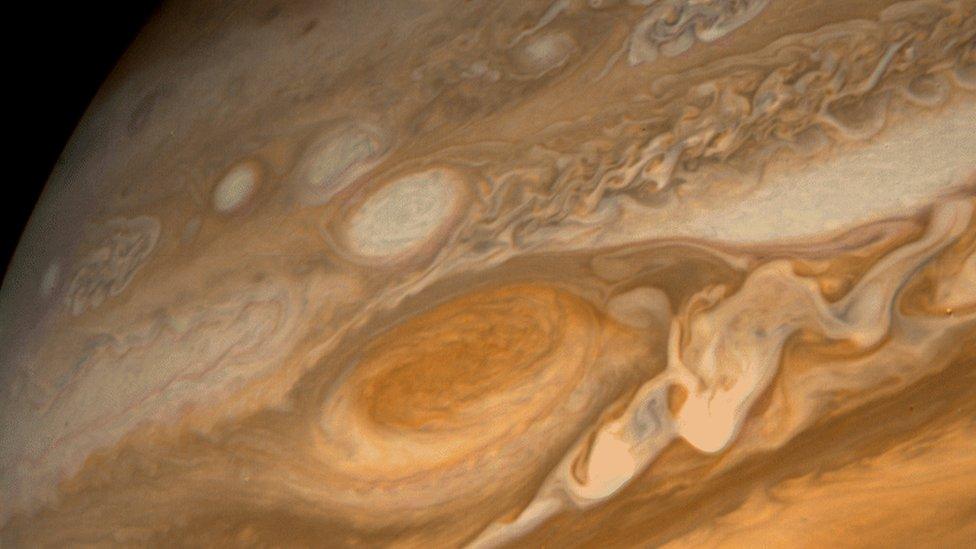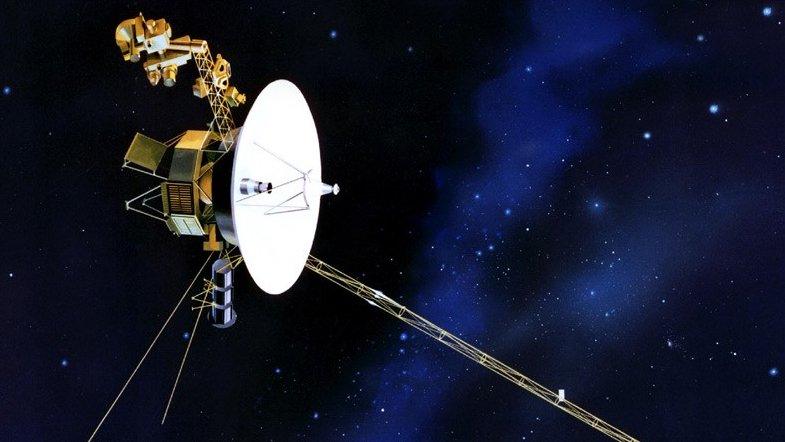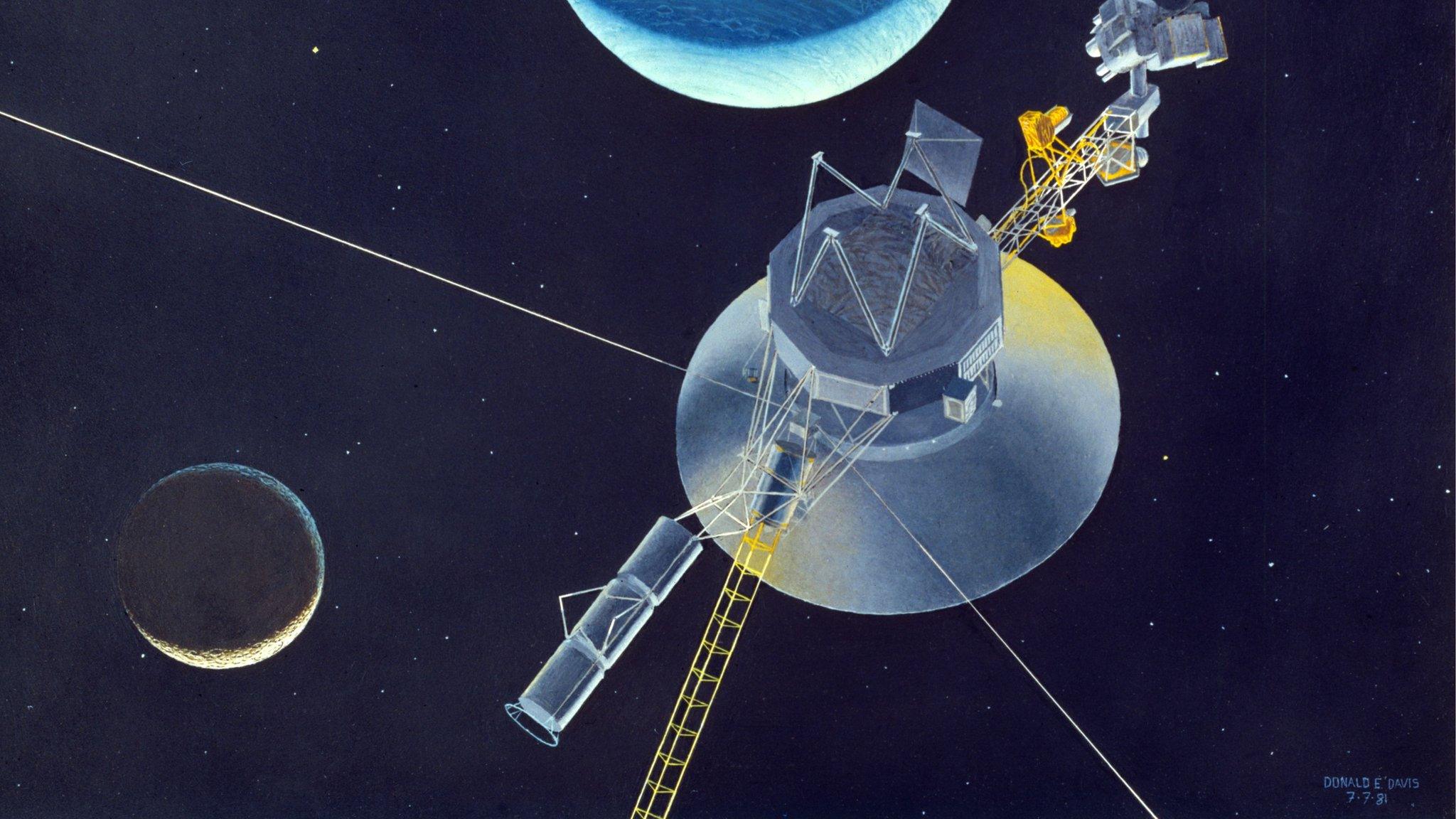Nasa begins powering down Voyager spacecraft
- Published
- comments

Nasa has begun to power down the Voyager spacecraft.
Voyager 1 and 2 are two identical probes that were launched by Nasa in 1977, and have become the longest-flying spacecraft in history.
Their initial job was to give us a closer look at the moons on Jupiter and Saturn, but since then the probes have kept on going, and now Voyager 1 is the farthest human-made object from Earth and the first spacecraft to reach interstellar space.
However, after more than 50 years Nasa have begun to power down some of their systems, to keep them working until 2030, when they will be retired.
Farthest human-made object from Earth

Together Voyager 1 and 2 have taken more than 33,000 pictures of Jupiter and its five major satellites!
As of 2022, Voyager 1 is now more than 14.5 billion miles from the Sun and its warmth.
So Nasa engineers have had to make some tough decisions about which instruments to turn off in order to keep them running for as long as possible.
Both probes were fitted with 10 instruments each to help them to collect data on their missions, however now Voyager 1 only has four instruments left that still work, while Voyager 2 has five.
These instruments are powered by a special battery that turns a radioactive chemical called plutonium into electricity as it decays.
However over time, this battery has slowly stopped working.
Voyager 1 carries something pretty special on board - the Golden Record.
It's a gold-plated disc that contains a message from humanity that includes greetings in 55 languages, pictures of people and places on Earth, and music from musicians like Beethoven - kind of like a postcard of Earth to any aliens out there!

This image of Saturn was taken by Voyager 2
In 2019, engineers had to turn off the heater for the cosmic-ray detector, a key piece of equipment.
The final instruments Nasa will turn off will likely be the magnetometer and the plasma science instrument, which are in the body of the spacecraft.
Both spacecraft are now so far away from Earth that when engineers send them a radio signal telling it what to do, it takes almost 22 hours to reach Voyager 1 and just over 18 for Voyager 2 - even when travelling at the speed of light!
The engineers never imagined that the spacecraft would last as long as they have, and are now hoping they will be able to tell us more about the edges of our solar system, before they retire.
- Published12 September 2013

- Published4 November 2020

- Published16 July 2015

- Published17 December 2019

